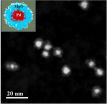INFORMATION:
Candidate voice pitch influences voters
University of Miami researcher finds that the tone of candidates' voices can help (or hurt) at the polls
2015-08-07
(Press-News.org) Coral Gables, FL (August 7, 2015)--Two new studies show that the tone of a candidate's voice can influence whether he or she wins office.
"Our analyses of both real-life elections and data from experiments show that candidates with lower-pitched voices are generally more successful at the polls," explains Casey Klofstad, associate professor of political science at the University of Miami College of Arts and Sciences, who is corresponding author on both studies.
The first study, published online in Political Psychology, shows that candidates who ran in the 2012 U.S. House elections and had lower voices were more likely to win their elections. These findings are more complex, however, once the sex of the candidate and his or her challenger is accounted for. When facing male opponents, candidates with lower voices won a larger vote share. But, when facing female opponents, candidates with higher voices were more successful and particularly so in the case of male candidates. "As individuals with lower voices have higher levels of testosterone, and as testosterone correlates with physical and social aggressiveness, it could be that male candidates with lower voices are perceived as too aggressive when paired against a female opponent," Klofstad said.
The second study, published online in the open-access journal PLOS ONE, used an experiment to examine why voters prefer leaders with lower voices. In the experiment Klofstad and his colleagues asked study participants to listen to pairs of recorded voices that had been manipulated to vary only in pitch. The participants were then asked which voice of each pair was stronger, more competent, older, and which voice they would vote for. The results of the experiment show that the preference for leaders with lower-pitched voices correlates with the perception that speakers with lower voices are stronger, more competent, and older, but the influence of perception of age on vote choice is the weakest of the three. Both studies were conducted and funded at Duke University, where Professor Klofstad spent the 2014 academic year.
"While these findings add to our understanding of why voters prefer leaders with lower voices, future studies are needed to test whether people with lower voices are actually stronger and more competent leaders," Klofstad said.
These two new studies illustrate that while voters consciously consider their own political preferences and those of the candidates when casting their ballots, voters also make thin impressionistic judgments based on far more subtle factors of which they may not be aware. Importantly, these factors may not be relevant to a candidate's leadership ability, which calls into question whether voters are actually capable of making reasoned choices at the polls.
The first study is titled "Candidate voice pitch Influences election outcomes," and is available online from Political Psychology. The second study is titled "Perceptions of competence, strength, and age influence voters to select leaders with lower-pitched voices," and is also available online from PLoS ONE. Co-authors of the second study are Rindy C. Anderson, assistant professor of biological sciences at Florida Atlantic University; and Stephen Nowicki, Bass Fellow and professor of biology at Duke University.
ELSE PRESS RELEASES FROM THIS DATE:
Studying yeast provides new insight to genome evolution
2015-08-07
CRG researchers have proposed a new theory to explain the origin of whole genome duplication at the beginning of the yeast lineage. Yeasts are single-celled fungi that originated over 100 million years ago. The ability of these organisms to ferment carbohydrates is widely used for food and drink fermentation. Yeasts are also one of the most commonly used model organisms in research. For example, the yeast Saccharomyces cerevisiae, which is used to make bread, wine and beer, was the first eukaryotic organism to be sequenced (in 1996) and is a key model organism for studying ...
Pediatric brain tumors can be classified noninvasively at diagnosis
2015-08-07
Medulloblastoma, the most commonly occurring malignant brain tumor in children, can be classified into four subgroups--each with a different risk profile requiring subgroup-specific therapy. Currently, subgroup determination is done after surgical removal of the tumor. Investigators at Children's Hospital Los Angeles have now discovered that these subgroups can be determined non-invasively, using magnetic resonance spectroscopy (MRS). The paper will be published online by the journal Neuro-Oncology (Oxford Press) on August 7.
"By identification of the tumor subgroup ...
Silently suffering from hearing loss negatively affects quality of life
2015-08-07
TORONTO - Hearing loss in adults is under treated despite evidence that hearing aid technology can significantly lessen depression and anxiety and improve cognitive functioning, according to a presentation at the American Psychological Association's 123rd Annual Convention.
"Many hard of hearing people battle silently with their invisible hearing difficulties, straining to stay connected to the world around them, reluctant to seek help," said David Myers, PhD, a psychology professor and textbook writer at Hope College in Michigan who lives with hearing loss.
In a ...
ED counseling program fails to reduce partner violence or heavy drinking
2015-08-07
Philadelphia - A large randomized clinical trial of an emergency department (ED)-based program aimed at reducing incidents of excessive drinking and partner violence in women did not result in significant improvements in either risk factor, according to a new study from researchers at the Perelman School of Medicine at the University of Pennsylvania. Contrary to previous studies which found brief interventions in the ED setting to be effective for reducing alcohol consumption to safe levels and preventing subsequent injury among patients with hazardous drinking, the new ...
Copper clusters capture and convert carbon dioxide to make fuel
2015-08-07
Capture and convert--this is the motto of carbon dioxide reduction, a process that stops the greenhouse gas before it escapes from chimneys and power plants into the atmosphere and instead turns it into a useful product.
One possible end product is methanol, a liquid fuel and the focus of a recent study conducted at the U.S. Department of Energy's (DOE) Argonne National Laboratory. The chemical reactions that make methanol from carbon dioxide rely on a catalyst to speed up the conversion, and Argonne scientists identified a new material that could fill this role. With ...
Anti-aging researchers develop new algorithm that provides precision medicine for cancer patients
2015-08-07
For years chemotherapy has been one of most common methods of treating cancer, but it comes with the substantial drawback of effecting healthy cells in the same way that it effects cancerous cells. This means that a subject of chemotherapy can experience great pain and sickness as a side effect of the potentially lifesaving treatment. A solution to this problem is targeted therapy, or the use of drugs, which more specifically targets cancer cells while ignoring nearby healthy cells. Targeted therapy is dependent on drugs which are tailored to inhibited cancer cell growth, ...
New test measures effectiveness of treatments for Huntington's disease
2015-08-07
A new test developed by UBC researchers allows physicians to measure the effects of gene silencing therapy in Huntington's disease and will support the first human clinical trial of a drug that targets the genetic cause of the disease.
The gene silencing therapy being tested by UBC researchers aims to reduce the levels of a toxic protein in the brain that causes Huntington's disease.
The test was developed by Amber Southwell, Michael Hayden, and Blair Leavitt of UBC's Centre for Molecular Medicine and Therapeutics and the Centre for Huntington Disease in collaboration ...
Pouring fire on fuels at the nanoscale
2015-08-07
This news release is available in Japanese.
There are no magic bullets for global energy needs. But fuel cells in which electrical energy is harnessed directly from live, self-sustaining chemical reactions promise cheaper alternatives to fossil fuels.
To facilitate faster energy conversion in these cells, scientists disperse nanoparticles made from special metals called 'noble' metals, for example gold, silver and platinum along the surface of an electrode. These metals are not as chemically responsive as other metals at the macroscale but their atoms become more ...
Scientists adopt new strategy to find Huntington's disease therapies
2015-08-07
Scientists searched the chromosomes of more than 4,000 Huntington's disease patients and found that DNA repair genes may determine when the neurological symptoms begin. Partially funded by the National Institutes of Health, the results may provide a guide for discovering new treatments for Huntington's disease and a roadmap for studying other neurological disorders.
"Our hope is to find ways that we can slow or delay the onset of Huntington's devastating symptoms," said James Gusella, Ph.D., director of the Center for Human Genetic Research at Massachusetts General ...
Fermilab experiment sees neutrinos change over 500 miles
2015-08-07
Scientists on the NOvA experiment saw their first evidence of oscillating neutrinos, confirming that the extraordinary detector built for the project not only functions as planned but is also making great progress toward its goal of a major leap in our understanding of these ghostly particles.
NOvA is on a quest to learn more about the abundant yet mysterious particles called neutrinos, which flit through ordinary matter as though it weren't there. The first NOvA results, released this week at the American Physical Society's Division of Particles and Fields conference ...
LAST 30 PRESS RELEASES:
The Ceramic Society of Japan’s Oxoate Ceramics Research Association launches new international book project
Heart-brain connection: international study reveals the role of the vagus nerve in keeping the heart young
Researchers identify Rb1 as a predictive biomarker for a new therapeutic strategy in some breast cancers
Survey reveals ethical gaps slowing AI adoption in pediatric surgery
Stimulant ADHD medications work differently than thought
AI overestimates how smart people are, according to HSE economists
HSE researchers create genome-wide map of quadruplexes
Scientists boost cell "powerhouses" to burn more calories
Automatic label checking: The missing step in making reliable medical AI
Low daily alcohol intake linked to 50% heightened mouth cancer risk in India
American Meteorological Society announces Rick Spinrad as 2026 President-Elect
Biomass-based carbon capture spotlighted in newly released global climate webinar recording
Illuminating invisible nano pollutants: advanced bioimaging tracks the full journey of emerging nanoscale contaminants in living systems
How does age affect recovery from spinal cord injury?
Novel AI tool offers prognosis for patients with head and neck cancer
Fathers’ microplastic exposure tied to their children’s metabolic problems
Research validates laboratory model for studying high-grade serous ovarian cancer
SIR 2026 delivers transformative breakthroughs in minimally invasive medicine to improve patient care
Stem Cell Reports most downloaded papers of 2025 highlight the breadth and impact of stem cell research
Oxford-led study estimates NHS spends around 3% of its primary and secondary care budget on the health impacts of heat and cold in England
A researcher’s long quest leads to a smart composite breakthrough
Urban wild bees act as “microbial sensors” of city health.
New study finds where you live affects recovery after a hip fracture
Forecasting the impact of fully automated vehicle adoption on US road traffic injuries
Alcohol-related hospitalizations from 2016 to 2022
Semaglutide and hospitalizations in patients with obesity and established cardiovascular disease
Researchers ‘listen in’ to embryo-mother interactions during implantation using a culture system replicating the womb lining
How changing your diet could help save the world
How to make AI truly scalable and reliable for real-time traffic assignment?
Beyond fragmented markets: A new framework for efficient and stable ride-pooling
[Press-News.org] Candidate voice pitch influences votersUniversity of Miami researcher finds that the tone of candidates' voices can help (or hurt) at the polls



